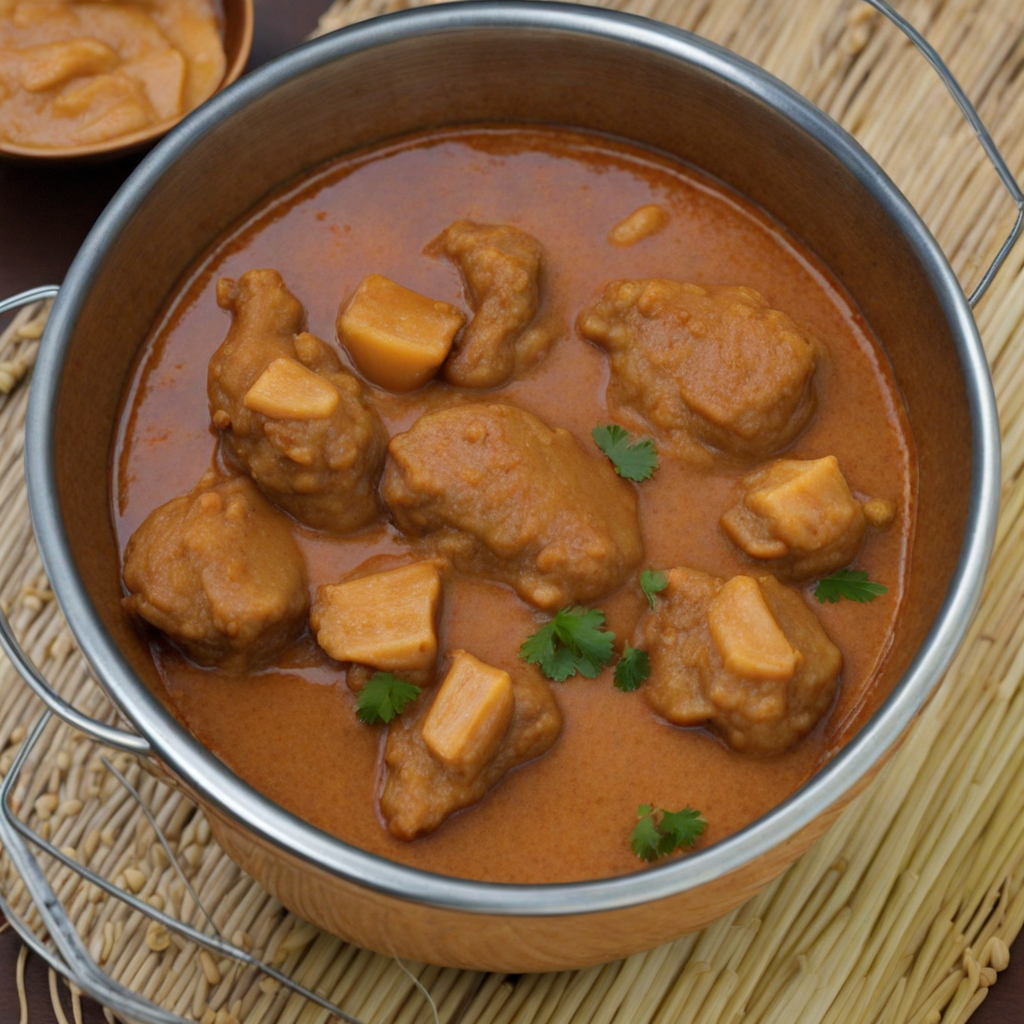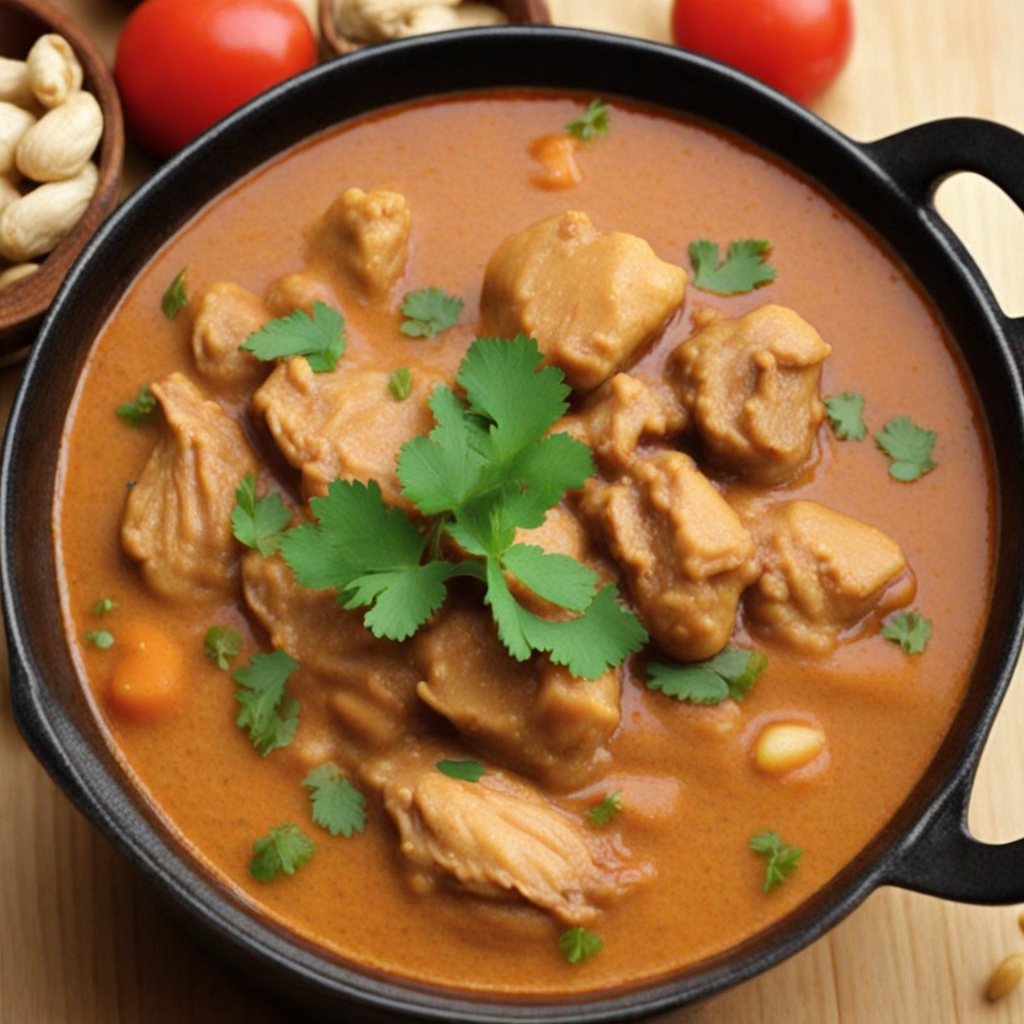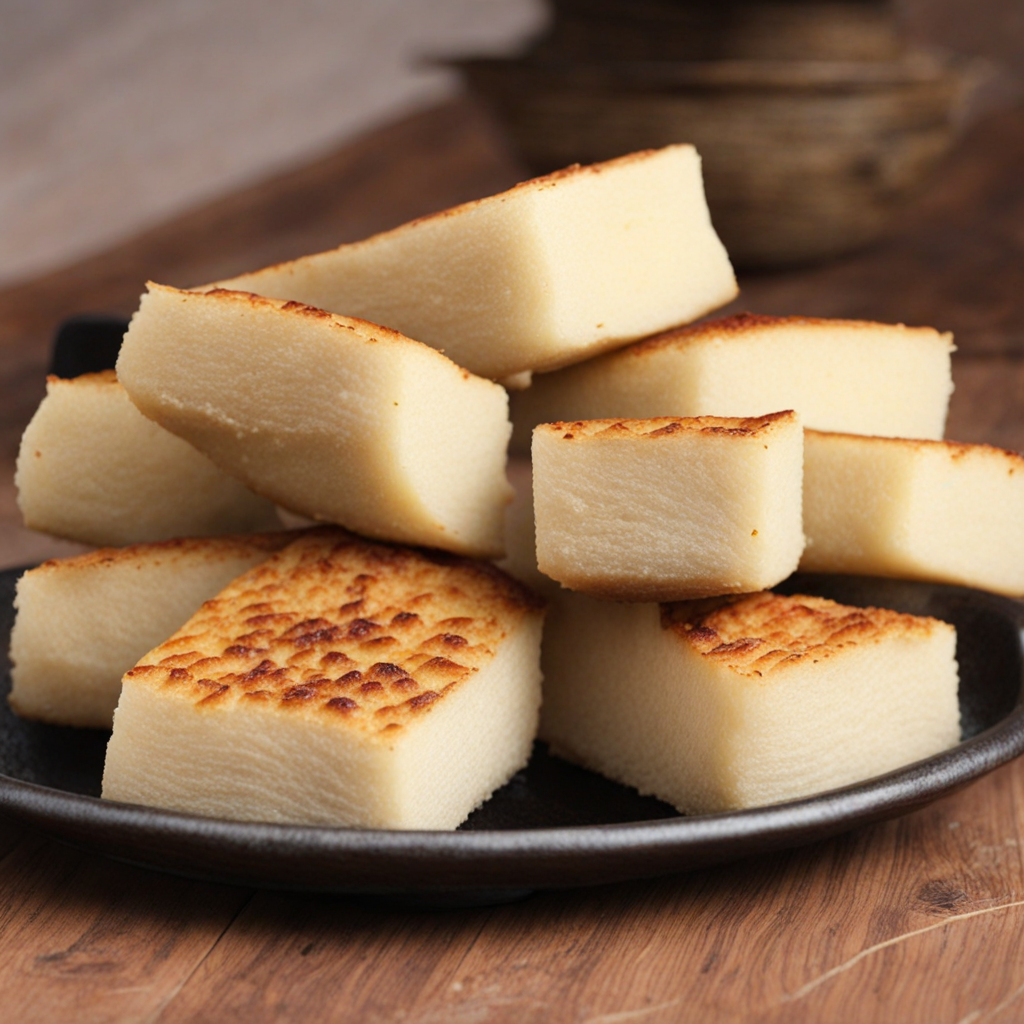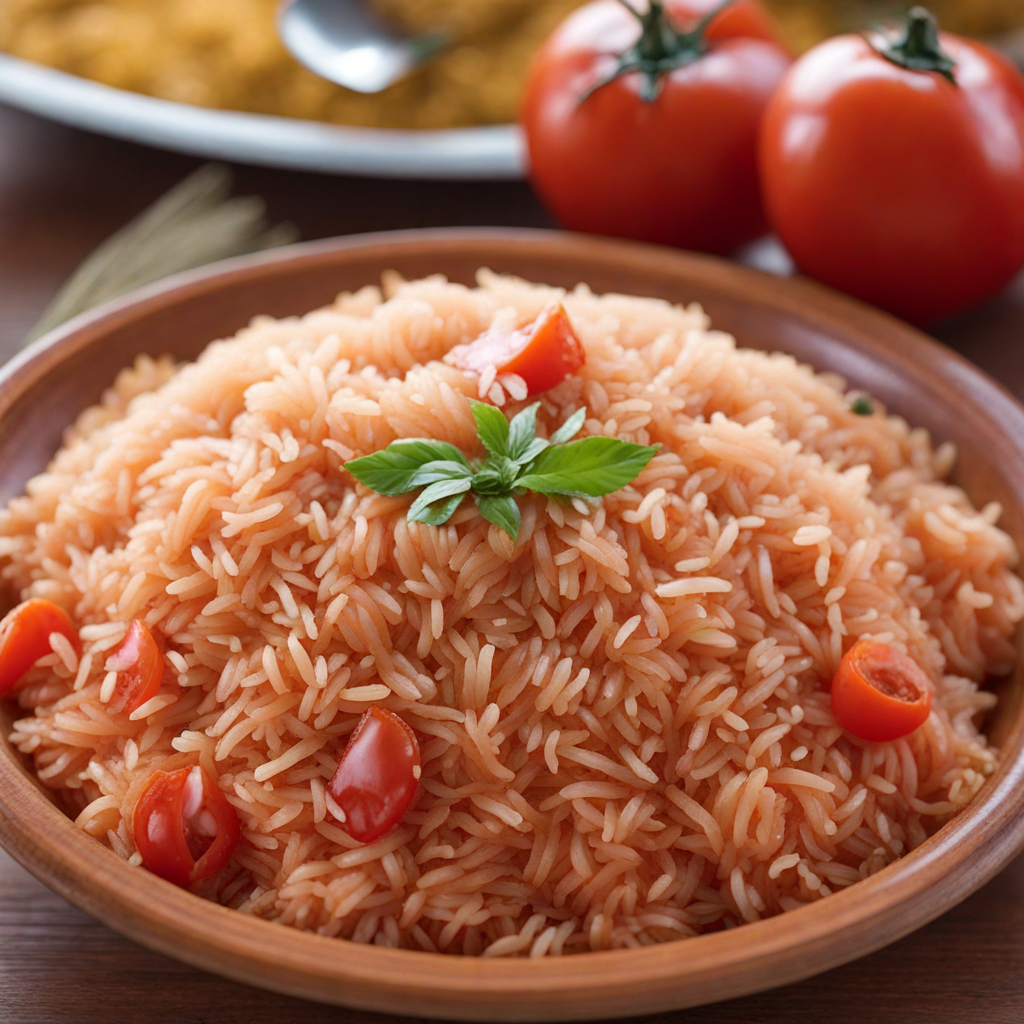Muamba Nsusu
Muamba Nsusu is a traditional dish from the Central African Republic that offers a unique and flavorful experience for those seeking to explore new culinary landscapes. At its core, this dish features chicken, which is often marinated in a blend of spices that may include garlic, ginger, and perhaps a hint of chili for warmth. The chicken is then simmered to tender perfection in a rich, savory sauce made from palm oil, which not only adds a distinct flavor but also a lush, vibrant color to the dish. The use of fresh ingredients and local herbs enhances the overall taste, making it a delightful representation of Central African cuisine. Alongside the chicken, Muamba Nsusu is typically accompanied by a variety of starchy sides, such as cassava or plantains. These sides serve not only to balance the rich flavors of the sauce but also to provide a satisfying texture that complements the tender meat. The dish is often served with a side of vegetables, which may include okra or other seasonal greens, adding a refreshing crunch and a nutritional boost. The combination of savory, spicy, and earthy flavors creates a harmonious dish that excites the palate and invites diners to savor every bite. What sets Muamba Nsusu apart is its communal nature; it is often enjoyed in a shared setting, bringing friends and family together around the table. The experience of eating this dish is as important as the flavors themselves, as it embodies the warmth and hospitality of Central African culture. For those adventurous eaters looking to expand their culinary horizons, Muamba Nsusu is not just a meal but a story of tradition, community, and the rich tapestry of flavors found in the Central African Republic.
How It Became This Dish
Muamba Nsusu: A Culinary Heritage of the Central African Republic #### Origins and Ingredients Muamba Nsusu is a traditional dish from the Central African Republic (CAR), a nation characterized by its rich cultural diversity and complex history. The dish primarily consists of chicken, palm oil, and a variety of vegetables, including eggplant, okra, and sometimes cassava leaves. Its name, "Muamba," derives from the Bantu word for "stew," while "Nsusu" is often associated with the term for "palm oil," a crucial ingredient in many Central African cuisines. The origins of Muamba Nsusu can be traced back to the indigenous communities of the region, where the combination of ingredients reflects the agricultural practices and natural resources available. The Central African Republic is endowed with lush vegetation and a variety of crops, making it possible for local inhabitants to cultivate and harvest these ingredients sustainably. Palm oil, in particular, has been utilized in the region for centuries, not just for cooking, but also for ceremonial purposes and as a source of nutrition. #### Cultural Significance Muamba Nsusu is more than just a meal; it embodies the cultural identity of the Central African people. In a society where communal eating is a cornerstone of social interaction, this dish often serves as a centerpiece for gatherings and celebrations. Families come together to prepare the meal, with roles often divided among members—some may handle the meat preparation, while others focus on chopping vegetables or stirring the pot. This collaborative approach fosters community ties and reinforces familial bonds. In various Central African cultures, food is intertwined with spirituality and tradition. Muamba Nsusu is frequently prepared for significant events, such as weddings or religious ceremonies, symbolizing prosperity and togetherness. The dish is not just a source of nourishment but also a medium through which stories and cultural heritage are passed down through generations. Elders often recount tales of their ancestors while preparing the meal, creating a rich tapestry of history and tradition that envelops the dining experience. #### Development Over Time As with many traditional dishes, Muamba Nsusu has evolved over time, influenced by external factors, including colonialism, globalization, and migration. The colonial period in Central Africa brought about significant changes in agricultural practices and food availability, with new ingredients being introduced to the local diet. Although palm oil remained a staple, other fats such as butter or vegetable oils began to find their way into the cooking practices of some communities, leading to variations in the traditional recipe. In the post-colonial era, as the Central African Republic grappled with its identity, Muamba Nsusu emerged as a symbol of national pride. Efforts to promote local cuisine gained momentum, with chefs and home cooks emphasizing the importance of traditional dishes in showcasing the nation’s cultural richness. Food festivals and culinary competitions began to highlight local ingredients and recipes, further solidifying the role of Muamba Nsusu as a culinary ambassador of the Central African Republic. The advent of globalization has also impacted the dish, as the rise of the internet and social media has facilitated the exchange of culinary ideas across borders. Young chefs and food enthusiasts have taken to platforms like Instagram to showcase their own interpretations of Muamba Nsusu, experimenting with new flavors, techniques, and presentations. This modern twist has not only helped to popularize the dish beyond its geographical confines but has also encouraged a renewed interest in traditional cooking methods among younger generations. #### Contemporary Interpretations Today, Muamba Nsusu is celebrated in both traditional and contemporary culinary contexts. While the classic recipe remains cherished, variations have emerged that cater to evolving tastes and dietary preferences. For instance, some chefs incorporate local fish or game meat, offering a unique twist while maintaining the essence of the dish. Vegetarian adaptations have also gained popularity, with plant-based substitutes replacing chicken to create a dish that appeals to a broader audience. The dish’s versatility allows it to be served in various settings—from informal family gatherings to upscale restaurants. In urban areas, Muamba Nsusu has found its way onto the menus of fusion restaurants, where chefs blend traditional ingredients with global culinary techniques, creating an innovative dining experience. This evolution reflects a broader trend within the culinary world, where traditional dishes are reimagined to meet contemporary palates while retaining their cultural roots. #### Conclusion: A Symbol of Resilience and Identity Muamba Nsusu stands as a testament to the resilience and adaptability of Central African culinary traditions. It encapsulates the rich history and cultural significance of the Central African Republic, serving as a reminder of the importance of food in uniting communities and preserving heritage. As the dish continues to evolve, it remains a vital part of the national identity, resonating with both locals and those who encounter it through culinary exploration. In a world increasingly driven by fast food and convenience, Muamba Nsusu invites us to slow down and appreciate the stories that food can tell. Each bite carries with it the weight of history, the warmth of community, and the spirit of a people who have thrived against the odds. Whether enjoyed in a bustling city or a quiet village, Muamba Nsusu remains a cherished dish that nourishes both body and soul, a delicious link between the past and the present.
You may like
Discover local flavors from Central African Republic







